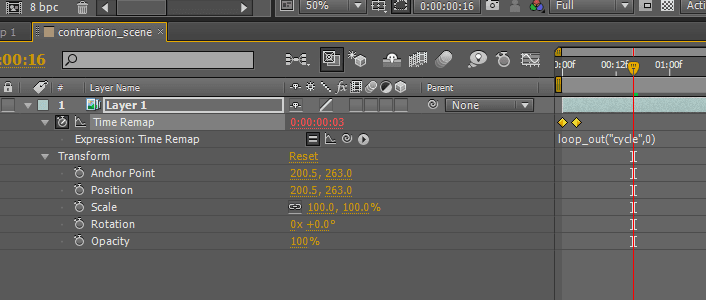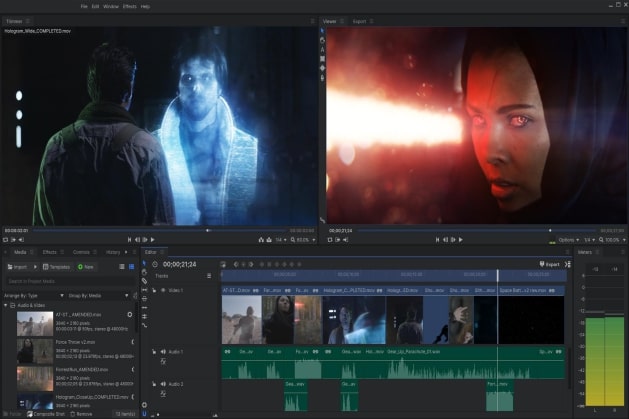Take the titles and graphics you created in Photoshop and import them into After Effects for the finishing touch. Here’s how to do it.
Mark describes the main tools and workflows that Photoshop and After Effects share in common, as well as some key differences. He explains functions that exist in both, but with different names or locations in the UI. Mark goes over how to set up a Photoshop design for video, animate text, and render motion to Photoshop text. Importing and Animating Photoshop Layers in After Effects CC.
Independent filmmakers and videographers not only have to develop and film the content they produce, but they have to add the finishing touches to that content as well. These finishing touches can come in the form of editing their work down to a fine cut, mixing the audio, and even developing the opening titles or graphics for the content.
The easiest place to develop these titles or graphics for most users is Photoshop — but that shouldn’t be the end of the process. What many don’t realize is that things developed in Photoshop can be translated over to After Effects with relative ease. This is because Adobe includes a Photoshop rendering engine within After Effect, which makes it easy to add motion and animate your graphics. Let’s take a quick look at how to import Photoshop graphics into After Effects, giving you the ability to generate amazing motion graphics work like this:
Video via Sander van Dijk
Step 1: Develop Your Graphics
The first step in this process is to develop the graphics you’ll be importing into After Effects. These graphics can be just about anything, but are usually an adjusted text layer or logo. Just make sure that your Photoshop layers are organized and grouped, properly named, and unlocked, as After Effects will import these layers as they are.
Image via Sander van Dijk
Step 2: Import Your Graphics
1. In After Effects, go to File > Import > File or simply hit Command+I.

2. A dialogue window will appear where you can browse and find your PSD. Before you select OK, be sure to select Import As: Composition, as well as check the Photoshop Sequence box.
The other two choices Footage and Composition – Retain Layer Sizes allow users to import a series of images that act as a single frame in a sequence, or that are imported at the same resolution and size as the image in Photoshop.
3. An additional box will appear giving you options for importing the layers, simply leave this as is and click OK. Once you do this, it may take some time for your comp to be created based on how big the PSD file is.
Step 3: Animate Your Graphics
Once you have your graphics imported, you can double-click the created comp in the Project Panel. This will open the comp for editing. From here you can begin exploring ways to animate your graphic by keyframing the layer’s attributes or using the Puppet tool. You can also use Photoshop to enhance or fix issues in your footage from After Effects, but that’s another tutorial for another day.
Video via PremiumBeat
Have you ever utilized Photoshop in your After Effects workflow? Let us know your thoughts in the comments below.
Sign In
Register
- Access to orders in your account history
- Ability to add projects to a Favorites list
- Fast checkout with saved credit cards
- Personalized order invoices

Create Account
Course details
Even to users familiar with apps in the Creative Cloud, After Effects often comes across as the hardest to learn. However, if you already know other Creative Cloud apps, you are likely to see a lot of familiar features in After Effects. In this course, instructor Mark Christiansen focuses on these familiar features and shows you how to create designs that combine graphics and photographed images. Mark describes the main tools and workflows that Photoshop and After Effects share in common, as well as some key differences. He explains functions that exist in both, but with different names or locations in the UI. Mark goes over how to set up a Photoshop design for video, animate text, and render motion to Photoshop text. He concludes with recommendations on where to learn more.
Note: This course was created by Mark Christiansen. We are pleased to host this training in our library.
Instructor
- Mark Christiansen is a creator and leader. He is also the author of After Effects Studio Techniques.
In addition to writing the definitive book about creating visual effects with the world's most popular compositing application, Mark has supervised visual effects for feature films such as All About Evil. He has also created visual effects, animations, and designs for Avatar, Pirates of the Caribbean: At World's End, The Day After Tomorrow, Spy Kids 3-D, and more. Mark's clients include Sony, Adobe, Cisco, Sun, Cadence, Seagate, Intel, and Medtronic, and his broadcast motion graphics work has appeared on HBO and the History Channel. Mark's roles have included production, direction, design, and on-set and post-production supervision. His career began at LucasArts.
Mark is a founding author at ProVideo Coalition and an instructor at fxphd and the Academy of Art University, as well as a guest host on podcasts including 'The VFX Show.' He is located in the San Francisco Bay Area.

Skills covered in this course
Is After Effects the Photoshop of video?
“- There are four primary design apps in Creative Cloud, and each is the leader in its respective category. While many artists know their way around some combination of Photoshop, Illustrator and InDesign, After Effects has remained the unknown, even for many experts. In separate courses, I introduce After Effects to Illustrator and InDesign artists. But in this course, we will look at all of the features in After Effects that you already know from Photoshop. From its very inception, After Effects was guided by Photoshop and emulated many of its features, the layer stack model, blending modes, many of the selection tools, layer styles, filters, even the checkerboard background. These have all long been part of After Effects despite that it didn't even begin as an Adobe product. And in the time since, many more features have been developed to be shared by both, with each development team sometimes borrowing concepts…
Download courses and learn on the go
Watch courses on your mobile device without an internet connection. Download courses using your iOS or Android LinkedIn Learning app.
After Effects Import Photoshop Layers
Watch this course anytime, anywhere. Get started with a free trial today.

Photoshop And After Effects Tutorials
Contents

Comments are closed.